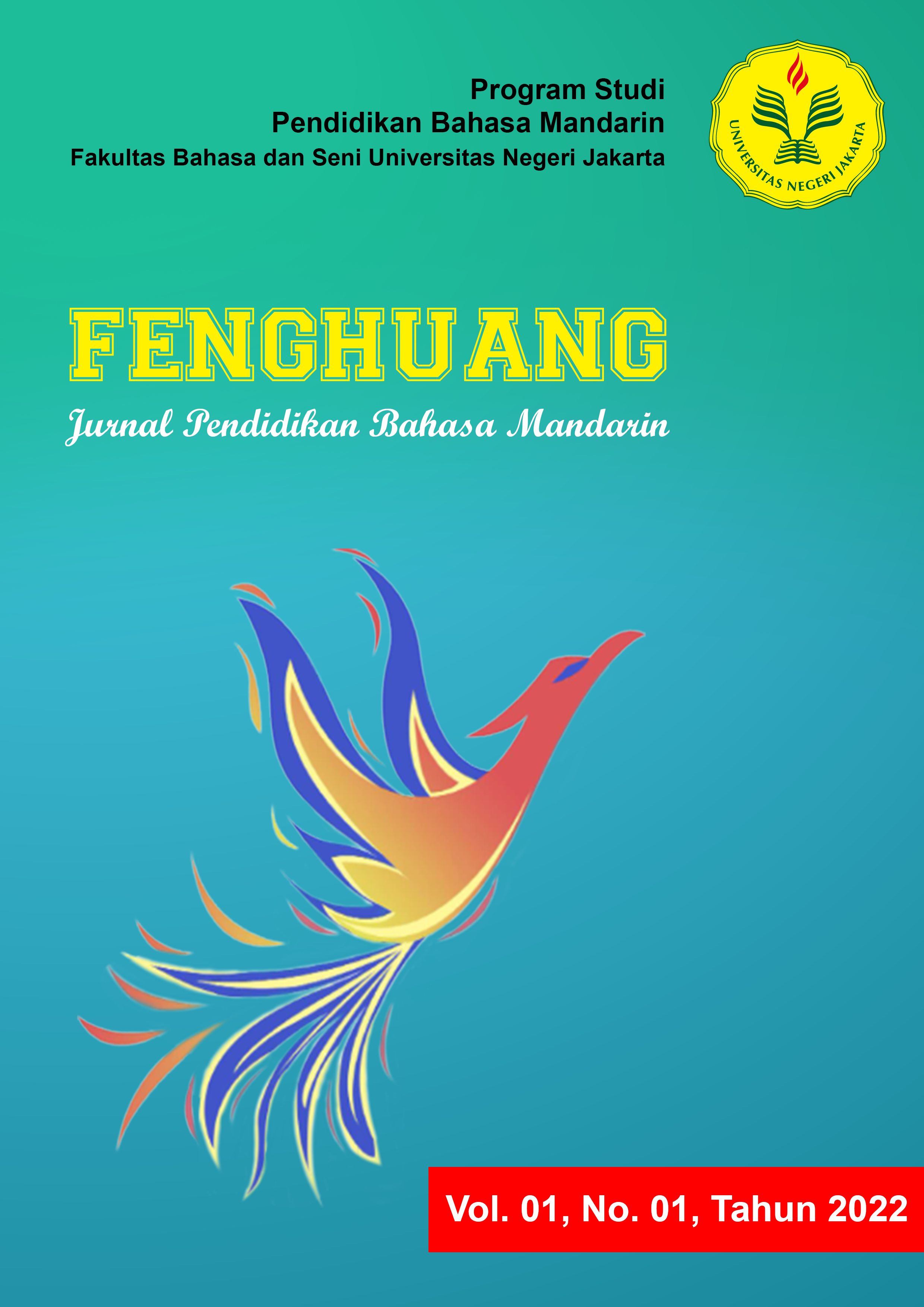Analisis Kesalahan Penggunaan Nomina Lokatif, Nomina Tempat, dan Nomina Waktu sebagai Keterangan dalam Kalimat Bahasa Mandarin
DOI:
https://doi.org/10.21009/Fenghuang.101.01Keywords:
language error, locative noun, place noun, time noun, adverbialAbstract
In Chinese language, there are subcategories of nouns that can act as descriptions, namely locative nouns, place nouns, and time nouns. The description in the sentence is before or after the subject so that the structure of the Chinese sentence starts from the adverbial, subject, predicate, object or subject, adverbial, predicate, object.
In the learning process, language errors are unavoidable. Language errors can be used as research material to support language learning. This study aims to identify errors that arise in the use (sentence structure and diction) of locative nouns, place, and time as descriptions in Chinese sentences by 2017 students of the Chinese Language Education Study Program.
This research uses qualitative and quantitative methods. Research data were obtained through test instruments in the form of translation questions, filling in gaps, and arranging words. Research is limited to sentence structure errors and diction errors.
The results showed that the error rate of using locative nouns, place, and time as adverbial in Chinese sentences was at a very low level. The percentage of sentence structure errors for translation questions is 4.8%, the percentage of diction errors for questions filling in gaps is 12.4%, and the percentage of word-composing questions is divided into two, namely sentence structure errors as much as 12.7%; diction error as much as 1.08%. The results of this study are expected to be input for teachers when teaching locative noun material, place and time as information.




